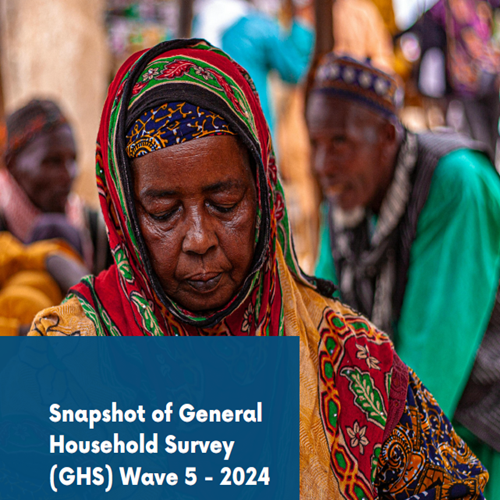Posted Sat, Jan 25, 2025 6:58 PM
Download Report (254 downloads)
The Nigeria General Household Survey (GHS)—Panel Wave 5 (2023/2024), conducted by the National Bureau of Statistics (NBS) in collaboration with the World Bank, tracks Nigerian households' socio-economic conditions to understand their resilience. It highlights demographic changes such as a rise in female-headed households (by 3.7 percentage points to 22.3 percent) and strong migration aspirations, with one in four adults considering relocation out of the country. Modest progress in education is noted, with average years of schooling increasing to 5.8 from 5.5, though literacy and access disparities persist, especially in rural areas. Health challenges, including widespread malaria and increasing disability prevalence among older adults, are compounded by healthcare access and cost barriers.
Food security has deteriorated, with two-thirds of households unable to afford nutritious meals due to rising costs and economic shocks. Significant urban-rural disparities are evident, particularly in infrastructure, as rural households report lower electricity access (40.4 percent) and fewer sanitation facilities. Farming dominates income-generating activities, while nonfarm enterprises face challenges such as limited access to electricity and credit. Most enterprises rely on informal savings, with formal registration being rare.Agricultural participation remains high, with seven in ten households engaging in crop farming, primarily cassava and maize. However, limited access to modern inputs and extension services hinders productivity. The GHS offers several key policy implications for enhancing the conditions and resilience of Nigerian households. These include expanding education access and quality, supporting childhood development, enhancing healthcare accessibility by focusing on disability and ageing populations, addressing rising food prices and dietary diversity, empowering the rural economy, and expanding extension services to farmers, among others. This report presents snapshots of the GHS. For the convenience of categorisation, the snapshots are presented in line with the four (4) dimensions of exposure in the multidimensional poverty index: namely, education, health, living standards, and work and shocks.
